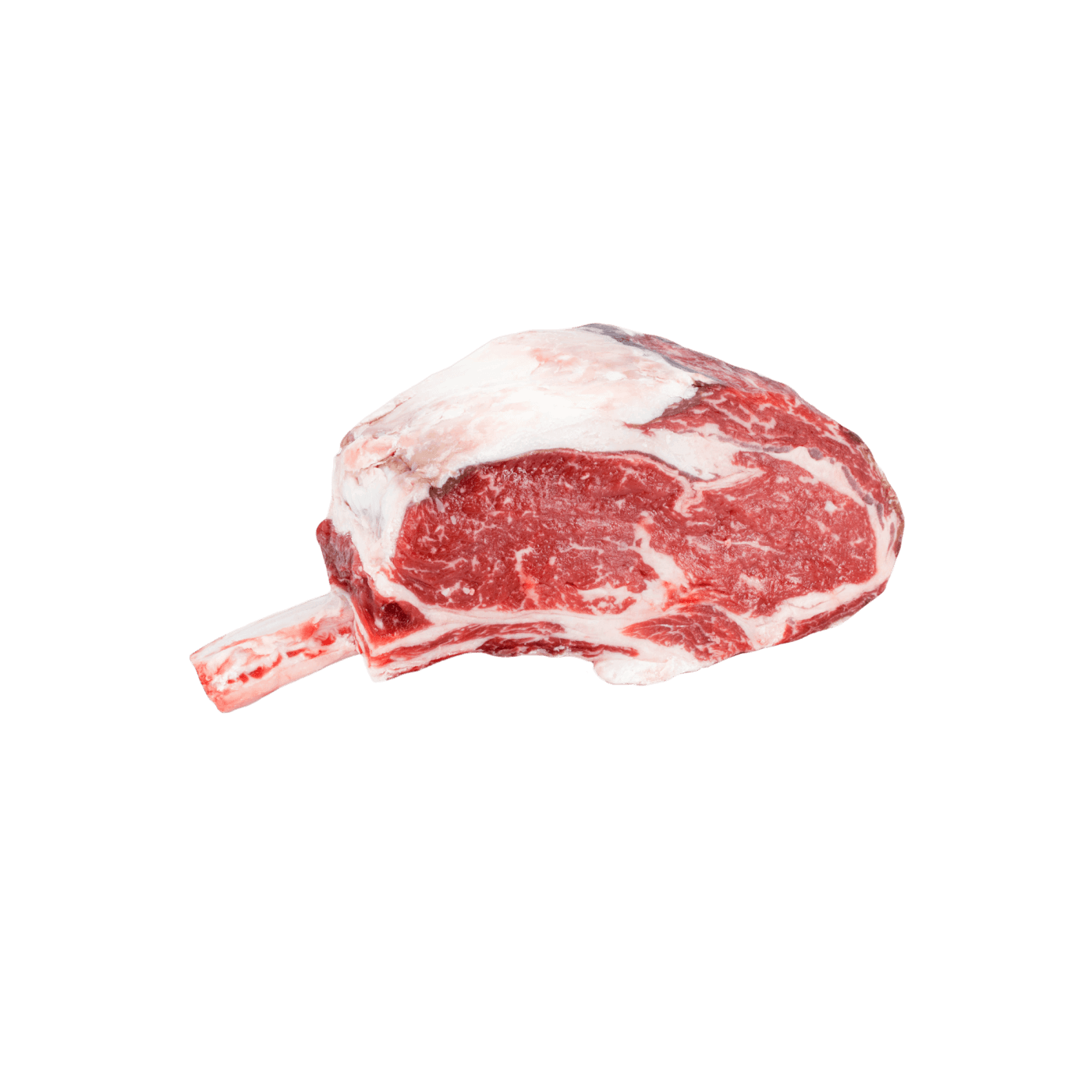The Tomahawk Steak is the big brother of the Ribeye Steak. The only difference between the two is the presence of the bone; otherwise it’s the same steak. All bone-in rib steaks will, clearly, have a bone (who knew?!), but the size of the bone fluctuates. The rib steak cut from the loin end of the rib (towards the south end of a north-bound cow) will have a bone length of about 6 to 8 inches, while the steak cut from the chuck end (closer to the head of the cow) will have a much shorter bone, maybe only 3 to 4 inches long. If you’ve ever seen what is called the “cowboy” steak, it is cut from the loin end so that the bone is long enough to be exposed on one end while still having a good sized section attached to the steak.
The question that I field the most when it comes to this cut is whether or not the bone will add flavor to the steak. General opinion is split 50/50 on this question, but I count myself among those who believe that no additional flavor is imparted. My personal opinion is that the only time the bone will impart flavor into the attached meat is when the meat is braised. By simmering the meat in liquid, there will be an interaction of the bone essence (basically marrow) with said liquid, which will then ultimately become the accompanying sauce. A steak on the grill will not replicate that co-mingling because there is simply no transfer medium.
So does that mean it’s not worth it? If it wasn’t worth it would I have anything to do with it? Didn’t think so. The addition of the bone with the steak takes a classic cut and gives it a little flair, along with the great fun of chewing on the bone once the steak is gone. This bone is the exact counterpart to pork baby back ribs and will have a thick portion of meat in addition to the Ribeye Steak; in some cases as much as an inch thick attached to it.
We dry age the whole prime rib as a primal, and once it hits 30 to 35 days of dry age, it’s ready to be cut into bone in rib steaks. Similar to the Kansas City Strip Steaks, you will see some darkening in the bones of this cut; the result of dry aged beef. During the dry aging process, these rib bones, as well as the outer layer of fat, are exposed to the open air in our temperature controlled dry aging rooms. When cutting rib steaks from a dry aged prime rib, or ‘export rib’ in industry terms, the outer fat is trimmed, as are the outermost edges of the rib bones. This trimming process eliminates the outer crust that develops during the dry aging process, leaving behind a more flavorful and tender product.

